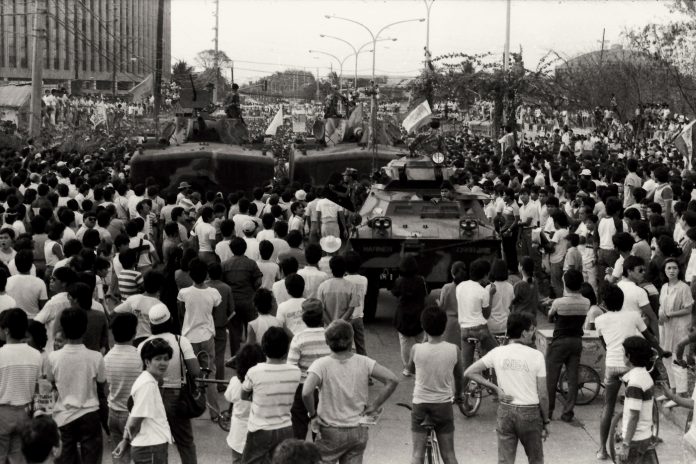
BY JOHN ANTHONY ESTOLLOSO
Humanities teacher, Ateneo de Iloilo-SMCS
MANY EQUATE the study of history with the tedious recall of names and dates, resulting to a plethora of information that holds no significant or practical meaning whatsoever to the student. It is hardly unexpected then that they can easily rattle off dead names and obscure dates yet cannot weave them in the wider fabric of continuous time: in the deluge of whats and whens, no one really bothers to ask for the whys, hows, and what thens.
Resultant from this intellectual indigestion and compartmentalization are misconceptions about historical thought that taught us nothing about avoiding the mistakes of the past. History, after all, is layered narrative: to know what happened before one is born requires a conjecturing of reasons, hypotheses, and implications, not a memorization of names and dates. As is usual with the case of the latter, too many and too much are lost in transition and in translation.
Our students will rely on fast popular references: Facebook pages with dubious names or YouTube clips which are strangely reliant on unheard-of sources. Then, it begins to proliferate: fake news, conspiracy theories, and eventually, mass misinformation. The scholastic outcome is as expected: fallacious essays that somehow get high marks and a virulent national amnesia.
The People Power Revolution of 1986 is not spared of this plague. What with the rising tide of historical revisionism, our understanding of this benchmark act of democracy has been put under siege. Try scrolling down social media platforms and you will be amused and disturbed by the sheer number of entities who try ad nauseam to discredit and devalue EDSA One of its consequential meaning.
More surprising are the number of people who actually fall for it. What seems to fade in the national memory is that the EDSA Revolution was the eventual national outburst brought about by years of political ambition and repression, material greed, and megalomania, masked with the façade of booming infrastructure, militarism and propaganda, and elitist art.
Perhaps what our generation needs is to reflect retrospectively, to go back to the raw details that built up those days when the Filipinos taught the world what democracy meant, without need of violence or brutality.
So try to ponder on these points and see how many of these can we answer truthfully and factually: How many of us are still aware that the People Power Revolution was not a one-day affair? How many people can situate what the main characters were doing at the beginning of the protracted conflict and the eventual significance of these to the forthcoming days? How many of the younger ones realize that the civilian revolt on the streets started primarily as a military coup?
Who called the masses out to the streets? Why were people of the cloth spread en masse on the front lines? Why did the tanks and armored carriers halt at the cusp of a possible massacre? Who turned the tide of the battle – or was there really a ‘battle’? Context provides interesting points of view as well: for a Panayanon, do we see the direct political ties between the assassination of Evelio Javier with the then-forthcoming storm at EDSA – or is Feb. 11 just another holiday break from schoolwork?
Photographs likewise reveal a lot of details that lend clues to historical nuances. (Unfortunately, these are often relegated as page-brighteners of textbooks.) For instance, in the inaugural photograph of the First Family on the balcony, why was Bongbong Marcos in military fatigues while the rest were wearing Filipiniana?
Who was the old lady holding the bible in Cory’s inauguration and why was she the one privileged to do that? Why were there so many religious images in the many photographs of the People Power? What does the state of Malacañang Palace reveal about the Marcos family moments prior evacuation? Why are the smashed portraits of Ferdinand and Imelda emblazoned with royal sashes? What narratives do these voiceless images tell?
Whether we like it or not, the questions and details present themselves persistently. These nitty-gritty minutiae are the beginnings of historical examination and consciousness which in turn mold our sense of nationhood: for us to ask what we are now and what we will become, we must first ask what we were and why we were as such.
Collective actions of those who came before us ultimately ripple to our times; pieced together, they form the tapestry of historical chronology and narrative that capture what it means to be the Filipino – our needs and wants, our desires and aspirations, our fears and insecurities.
Our textbooks and classes in history have sadly relegated the idea of People Power to a metaphorical abstraction devoid of contemporary relevance; students will study it for the scores but will these translate to keeping the lessons learned on the streets alive? Or in our intellectual apathy or bias, must we in due course become instrumental to a repeat performance of 1986?
Must we become victims of our own historical ineptitude and our political loyalties?
Beyond the callous and dichotomous political archetyping of reds, yellows, Vs, or Ls, the EDSA Revolution must sting the Filipino people back to the realization that they can and must exercise their sovereign power – even if that leads to toppling down dictators and strongmen with flowers and rosaries./PN




